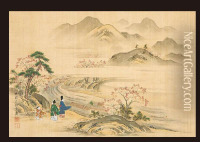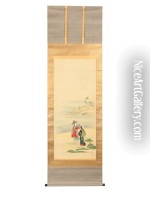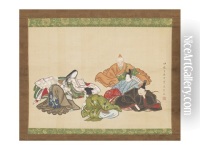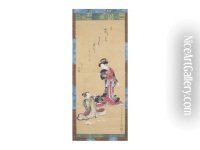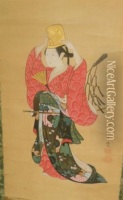Tsukioka Sessai Paintings
Tsukioka Sessai was a Japanese artist born in 1889, known for his contributions to the world of painting and printmaking. His work is less widely recognized internationally compared to some of his contemporaries, but within Japan, he holds a respected place for his contributions to the development of modern Japanese art, particularly in the early to mid-20th century. Sessai's art was deeply influenced by the cultural and political changes happening in Japan during his lifetime, especially the transition from the Meiji period through to the Showa period, which saw Japan modernizing and westernizing at a rapid pace.
Sessai's work is characterized by a blend of traditional Japanese techniques and the incorporation of Western practices and themes, which was a common trend among Japanese artists of his generation. He was proficient in nihonga, a style of painting that sought to rejuvenate traditional Japanese painting techniques with modern sensibilities. However, unlike many nihonga artists who focused solely on traditional Japanese themes, Sessai also explored western subjects and techniques, demonstrating his versatility and openness to cross-cultural influences.
Throughout his career, Sessai was involved in several important art movements and groups, contributing to the evolving landscape of Japanese art. His works were exhibited in numerous shows, and he played a role in the education of future artists, passing on the techniques and philosophies of both traditional and contemporary art forms. Despite the transformations in Japanese society and the art world during his lifetime, Sessai remained committed to exploring the beauty and complexity of both the natural and human-made world through his art.
Sessai's legacy is preserved in various collections and museums in Japan, where his works continue to be studied and appreciated for their artistic and historical significance. His death in 1965 marked the end of a significant chapter in Japanese art, but his contributions continue to influence and inspire artists and art lovers in Japan and around the world. His commitment to blending the old with the new, and the eastern with the western, remains a testament to the dynamic and evolving nature of art and culture.



